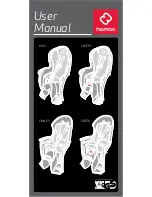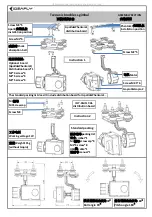
P
age
16
6.6 - BATTERY REPLACEMENT INSTRUCTIONS
As long as it is safe to do so, charge the set of batteries before replacing the failed
ones to make sure the good batteries are fully charged.
If possible, replace failed batteries with good batteries around the same age from
another piece of equipment. Try to avoid mixing new batteries in equipment with old
batteries. Put all new batteries in the same piece of equipment.
7.1 - FULLRIVER PRODUCTS
Fullriver Battery produces sealed, maintenance-free batteries that are non-
hazardous, non-spillable. During normal operation, our batteries will not release any
harmful gases and will not leak any acidic electrolyte into the environment.
Fullriver batteries are classified as safe for air, sea, and ground transportation. They
meet all requirements of the International Air Transport Association (I.A.T.A.), the
International Civil Aviation Organization (I.C.A.O.), the International Maritime
Dangerous Goods (I.M.D.G.), and the Department of Transportation (D.O.T.).
More than 98% of the lead in batteries is recycled - placing lead-acid batteries at the
top of the list of most highly recycled consumer products. The recycling loop of a
lead-acid battery goes on indefinitely.
7.2 - FULLRIVER MANUFACTURING
Fullriver Battery manufactures batteries in accordance with international
environmental regulations. We continually improve our process in order to minimize
waste, recycle all waste that is recyclable and discard waste that is not recyclable in
accordance with local disposal regulations. We strictly enforce the use of proper
ventilation and protective gear. This enforcement helps minimize employee
exposure to lead at a point well below suggested levels.
7.3 - SOLAR SETTING RECOMMENDATIONS
Fullriver Battery has a significant presence and history in the residential, commercial,
and RV solar markets. From this history, we provide the following recommendations
on charge controller and inverter settings:
7.3.1 - VOLTAGE SETTINGS
Please see tables 6 & 7 on Page 11 for bulk, absorption, and float voltage
recommendations.
Rebulk Voltage should be set low enough to not cause two charge cycles in one day,
typically 12.0, 24.0, or 48.0V. Refloat Voltage should be set slightly under 100% OCV
or 12.7, 25.4, or 50.8V.
Testing & Your Clean-Green Energy Solution
Summary of Contents for DC Series
Page 1: ...INSTALLATION AND OPERATION MANUAL ...
Page 4: ...Page d Notes ...
Page 5: ...Page 1 INSTALLATION AND OPERATION MANUAL ...
Page 24: ......





































